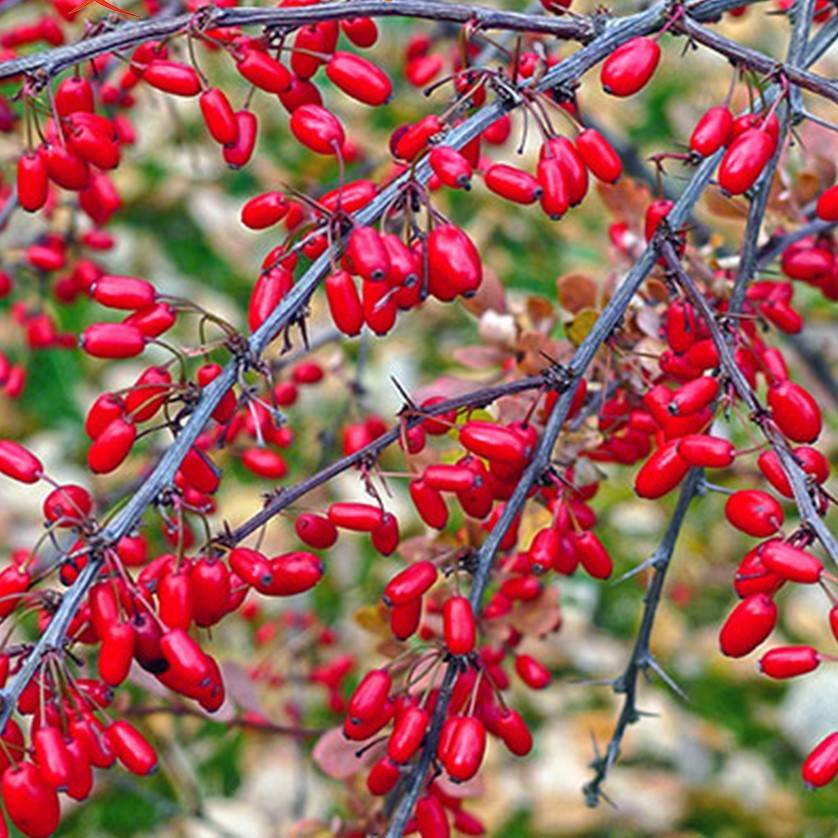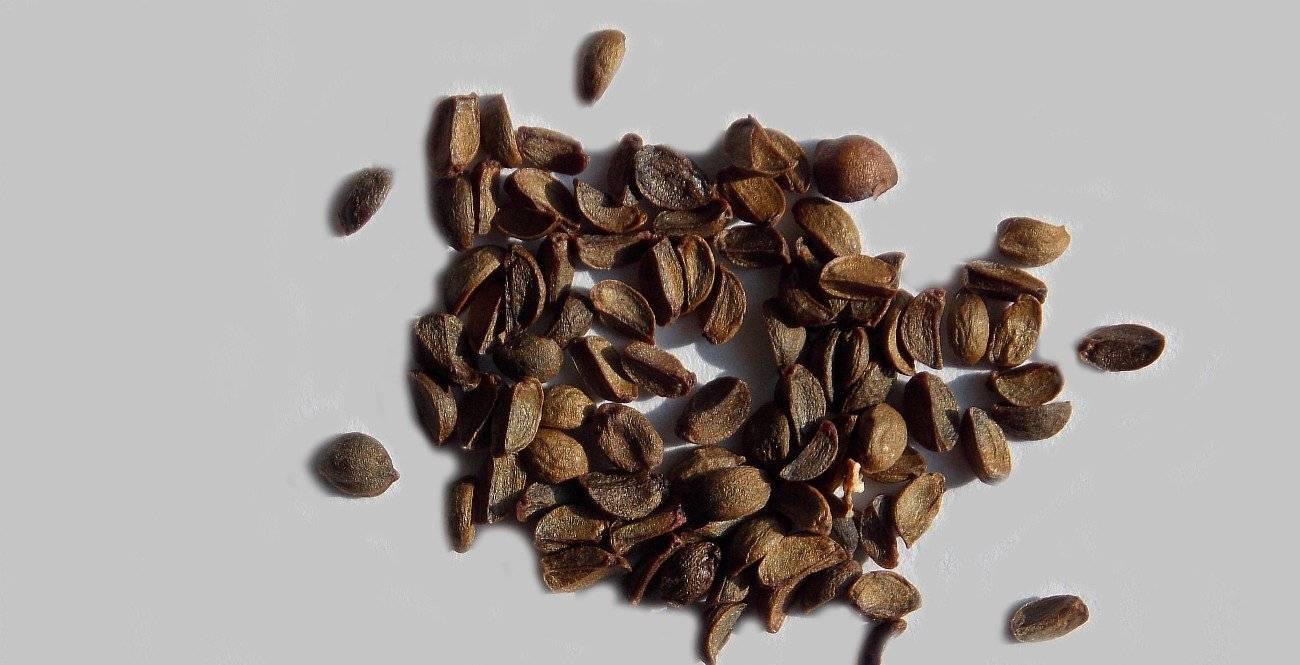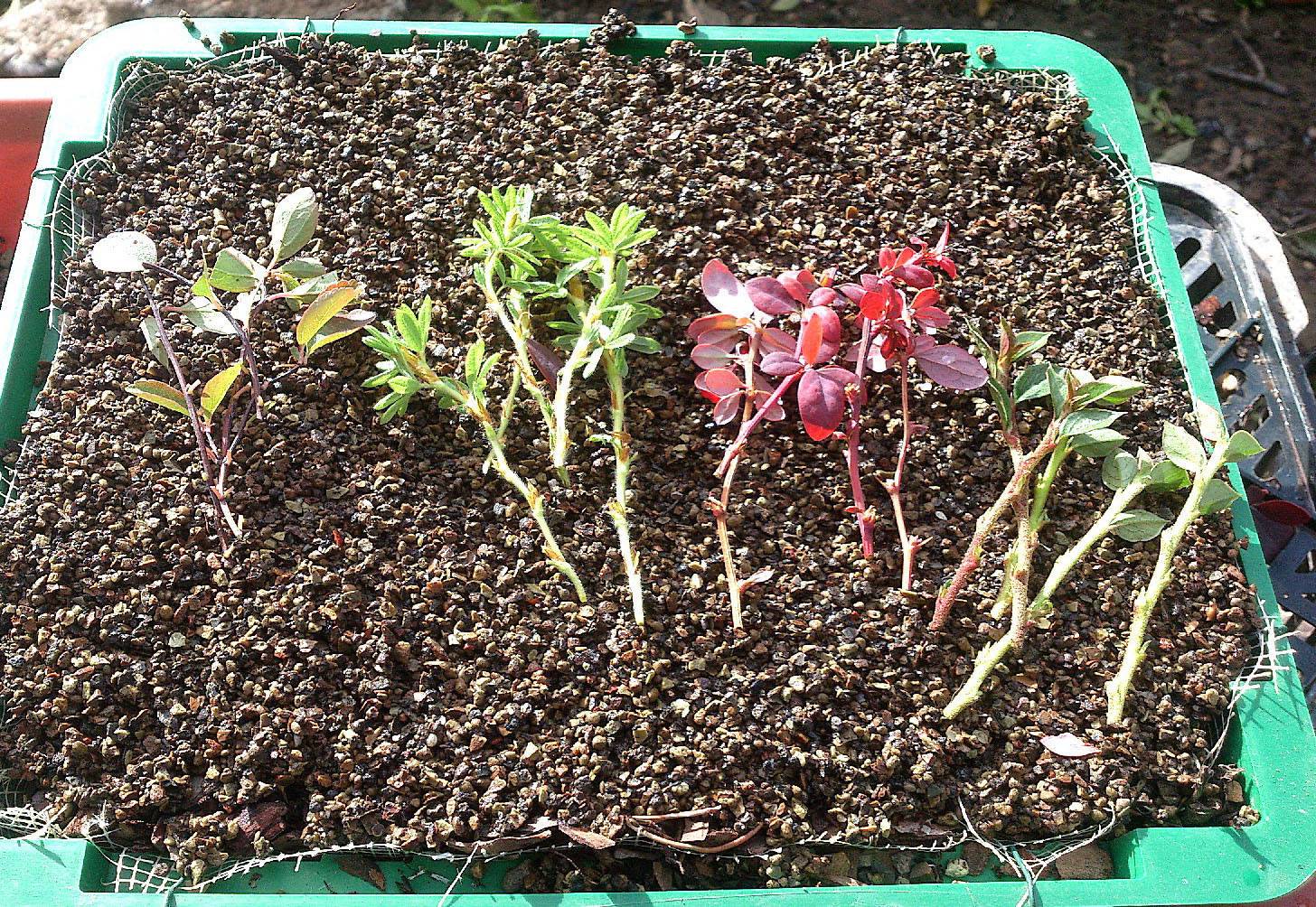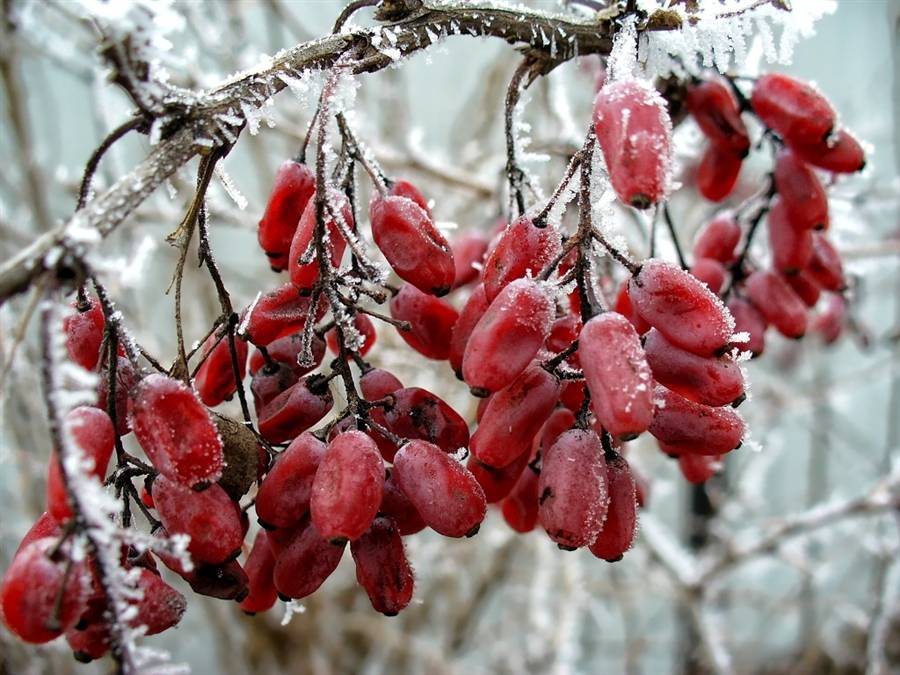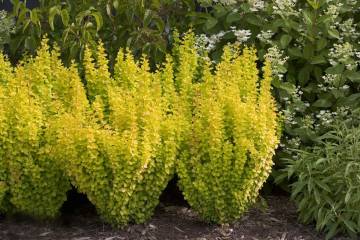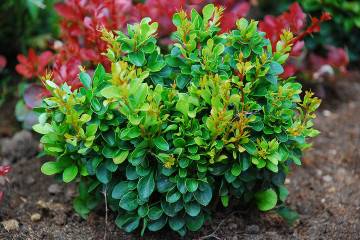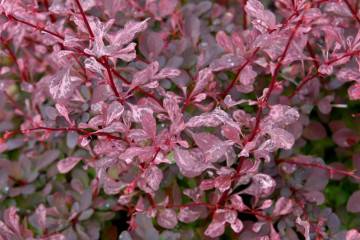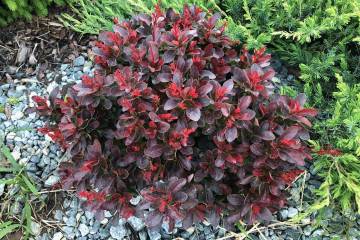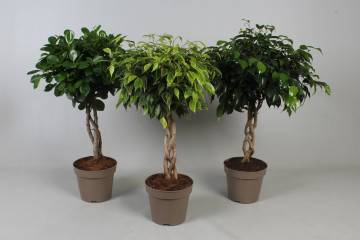Barberry Natasha - variety description and cultivation
Content:
Barberry Natasha is a variety that belongs to the Thunberg species. This is a decorative leafy variety that is actively used not only by gardeners, but also by landscape designers. Natasha is one of the most popular varieties of this group, distinguished not only by excellent external data, but also by ease of care.
Description barberry Natasha
Botanical description of the Natasha variety:
- life form - deciduous shrub;
- the height reaches 2.5 m;
- brownish-red branches are arched;
- the shape of the leaves can be diamond-shaped, oval, round;
- the color of the leaves depends on the location. In the shade, they are bright green with a bluish lower part, in the sun they are white-pink with green spots and a red edging. In autumn, the color changes to red or yellow;
- the stems are covered with sharp thorns;
- the flowers are creamy, they can be solitary, but more often they are collected in the inflorescences of umbrellas. Flowering begins in late spring and lasts about 3 weeks;
- in the second half of autumn, bright red elongated fruits ripen.
The main characteristics of the variety are drought tolerance and frost resistance, unpretentiousness.
Planting a plant
The optimal time for planting this plant variety in open ground is autumn, before the onset of the first frost. Before the cold weather, he manages to take root and get used to a new place, and with the arrival of spring it begins to actively grow and develop. Spring planting is also permissible, but it must necessarily occur before the buds begin to bloom on the seedling.
The advantages of the variety are quick adaptability to any habitat and good survival rate in a new place.
Step-by-step landing instructions:
- Dig holes into which the barberry seedling will be placed. They should be quite deep, at least half a meter.
- Cover the wells with the prepared soil mixture.
- At the seedling, thoroughly spread the roots and place them in the hole.
- Fill the root system with soil, which should be well tamped.
- Water the bush.
Planting from seeds
Seeds are also sown outdoors in autumn. They are laid out in small grooves with a depth of 1 to 3 cm, filled with sand. From above, the rows with seeds are insulated - mulched with sawdust and covered with spruce branches. You can also cover them with a special breathable garden insulation.
If the seeds still sprout, and this may happen next spring, they should be looked after. And only after 2-3 years a good bush can grow from them.
Planting seedlings in open ground
If the seedlings are purchased or grown independently, that is, the young plants are not yet strong enough, they are planted in open ground only in spring. Over the summer, they will have time to gain strength and prepare for wintering.Seedlings are planted at a short distance from each other and carefully looked after during the summer. Weeding, loosening, timely watering are required. The soil must be well drained.
How to care for barberry Natasha
Despite the fact that the barberry Natasha, like other representatives of the Thunberg species, is quite unpretentious, some care is necessary for it. These are elementary rules that are required for absolutely all plants: watering, feeding, pruning.
Watering
Watering is required mainly in hot dry weather. For this, only warm water is used. Watering should be root, so that water does not fall on the leaves of the Natasha barberry. Young, only planted plants are also watered until they take root. In rainy weather, watering is not required at all.
Top dressing
Top dressing is applied once a year, nitrogenous fertilizers are recommended for this variety of barberry. If you plan to grow Natasha for harvesting berries, it is worth adding potassium-phosphorus fertilizers at the beginning of summer.
Pruning
Pruning is practically not required for this variety. If all goes well, you don't need to use the pruning shears at all. Only damaged, dried or improperly growing shoots are removed.
Reproduction methods
Reproduction of barberry variety Natasha can occur in the following ways:
- seminal. Future plants are planted in the fall to a depth of 1-3 cm, insulated, thinned out in spring, after 2 years they are transplanted to a permanent place. Seed propagation is not the most convenient because of the low germination rate and too long waiting period for mature plants;
- by cuttings. Cuttings are cut in mid-July, treated with a root growth accelerator, for example, root, planted in a mixture of soil, peat and humus, taken in equal parts, and covered with a jar or plastic bottle. Periodically, the bushes are ventilated. After 2 years, the bushes can be planted in a new place;
- layering. It is quite easy to propagate the plant in this way. To do this, it is enough to bend a young branch to the ground in spring, fix it and sprinkle it with soil. In the fall, the daughter plant can be separated from the mother bush;
- dividing the bush. Thus, only adult bushes at least 4 years old can be propagated. The procedure is carried out in the spring, the damaged roots are sprinkled with crushed charcoal. New plants are immediately planted in prepared pits. This breeding method can be called the fastest and most productive. New barberry bushes develop immediately, blossom and bear fruit.
Diseases and pests
Insects practically do not encroach on the barberry Natasha. The exceptions are aphids and moths. Aphids can be removed with a saturated soap solution. But from one, and from another insect, special insecticides help well.
The main diseases that can affect the variety:
- powdery mildew;
- spotting;
- fungal diseases;
- rust.
It is better to remove the affected parts of the plant, and treat the entire bush with fungicides.
Flowering period
The flowering period begins in May and does not last long, about 2-3 weeks. The flowers are light caramel color. They are mainly collected in inflorescences. No additional care is required during this period. This variety, like other Thunberg varieties, is valued more for its beautiful and bright leaves.
Preparing for winter
It is easy to prepare barberry Natasha for winter due to its resistance to the most severe frosts. It is enough just to mulch the soil around the bush with dried foliage. The lower part of the plant is covered with a layer of fallen snow, this will be quite enough.
Use in landscape design
In landscape design, Natasha barberry is mainly used in group compositions. It can be either a hedge or flower beds. You can plant a shrub in a single form, it will be interesting to look at the porch or next to the bench, by the pond. Natasha combines well and takes root with any other plants.
Beneficial features
Despite the fact that many varieties of barberry are useful, their berries can be brewed and strengthened with their help, the immune system, the varieties of Thunberg do not have such abilities. The emphasis in them is made precisely on decorativeness. Berries are most often unpleasant to the taste, and in some cases dangerous.
Barberry Natasha is also valued exclusively for external data. Therefore, you should not pick berries in the fall and try to cook compote from them or add to tea, it is better to just admire them, they can hold out on beautiful stems throughout the winter. It is really beautiful. To be treated with barberry, it is worth growing other varieties.
Barberry Natasha is an extraordinary decorative variety, it is not without reason that it is so popular in horticultural circles. But beauty alone cannot cause love for a plant, especially one that is grown in the garden. This shrub can be planted even in the harshest regions due to its low temperature tolerance. The plant is perfect for beginners, as it is not picky to care for.

